New project with two production systems together in Southeast Spain
Friday, March 27, 2015
I have found a very curious video, that I should like to show you. If you want to watch it, please click on the link below:
http://www.rtve.es/alacarta/videos/agrosfera/agr-laboratorio-ideas-tenca/3045948/
Voice in off: “We visited the TECNOVA Centre, in Almería, where are being analyzed the results of the new project, which can be seen, in the same greenhouse, tomatoes and fish production --a project, having, as purpose, that farmers diversify its misuse—“.
Carolina Martínez (Head of the Experimental Centre): “Trying to help farmers improve their profit margin, per unit area, combining two production systems, using the operating, perfectly fine, the NGS (New Growing System) system, with AQUACULTURE”
Eduardo Pardo (Agronomist): “We have used, in a greenhouse, carry out, in the same area, two production systems: firstly, plants and, other, fish; yes, always on the proviso that the production of plants does not see reduced”.
Voice in off: “This new production system, at two levels, provides a wide variety of benefits, for farmers; who have seen it, have been very interested, in this equipment”
Carolina Martinez: “We are interested in seeing how this equipment works, not only for the cultivation of fish species, which is being cultivated, in this project, which is the species "Tench", but for the production of other types of fish, freshwater as it could be the "tilapia" or could be trout or crab”.
Voice in off: “This closed circuit is completely sustainable, thanks to the AQUAPONICS”
Eduardo Pardo: “What AQUAPONICS pretends is, on one hand, the utilization of resources and, on other hand, the synergy of combination of these two production systems”
Voice in off: “The AQUAPONICS with NGS system would suppose a change of habits, for producers”
Carolina Martinez: “Because, it is not possible, in this system of combined production, a foliar treatment, with plant protection products, to combat major diseases and insect pests, that affect these crops”
Ricardo Romero (Voice in off. Editorial office): “The project, co-financed by the European Funds ERDF and the Innovation Office of the Junta de Andalucía, hopes to be a sustainable tool for farmers, by leveraging the infrastructure of their greenhouses, to achieve a profit margin, now limited cause of continuous decreases, in the prices of their crops”
This project seems very curious, because I could never imagine that fish and tomatoes could grow together.
Again, it is showed that, in Spain, --despite the crisis—there are many people, with original ideas and full of illusion.
I hope that you have liked this video too.
Until my next post, kind regards,
Luis.
Sponsored by Costaluz lawyers.
Please click below:

 0
Like
Published at 11:55 AM Comments (0)
0
Like
Published at 11:55 AM Comments (0)
A new Spanish discovery against Tuberculosis
Thursday, March 26, 2015
Yesterday, I found a curious news, that said: “A video game helps diagnose tuberculosis collaboratively”.
A free videogame, named TuberSpot, helps diagnose new cases of tuberculosis, in a collaborative way. Identify the bacilli requires that a specialist observes, with a microscope, an average of 100 sample images and count the bacteria, a process that takes 30 minutes.
It is now proposed that players help identify bacilli, from images, in order to prevent people die, because their disease has not been diagnosed.
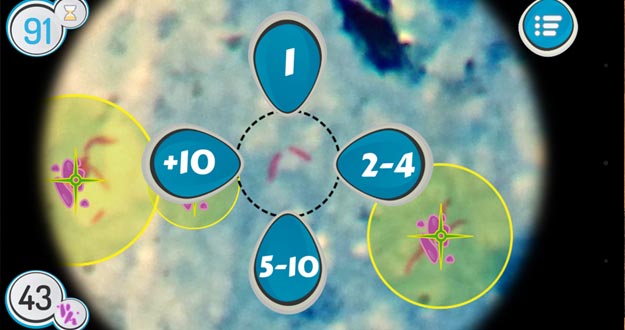
Tubercle bacilli identified with TuberSpot (in pink colour)
The game, available for PC and Android and soon for iOS –the operating system of Apple-- has been created, by a laboratory of the School of Telecommunications Engineering (ETSIT) of the Polytechnic University of Madrid, who has created a game, for help to diagnose malaria.
In the case of MalariaSpot, researchers studied more than 12,000 games played by volunteers, from a hundred different countries, and they found that, combining results of 22 players around the same image, data obtained were as accurate as by a specialist, collected by Efe .
The objective of TuberSpot is that the player identify many bacilli, as possible, in two minutes. The image of these bacteria, that cause tuberculosis, images come from samples of sputum –a fluid that you expel when you cough--, explain its creators.
To distinguish the bacilli, they have a tutorial, and once identified, the player has to "point and shoot". They also have to avoid a confusion, with what the creators have called 'guarratos', a bacteria, that look like bacilli are not.
The score is generated, when the bacilli, detected by the player, are compared with the previously, identified by experts, and the first hits.
Researchers, from the lab ETSIT, claim that, if the game works, they will be introduced, in future releases, images that have not been yet inspected, by specialists, to help diagnose new cases.
So, they should like to establish a specialized unit of players-workers, able to help diagnose diseases online and develop new games, across all platforms, to minimize the time, required to analyze the samples.
Another initiative, planned, is to develop a microscopy system-on-a-phone-mobile, for remote diagnostics, where field workers and health centres can transfer data, directly, to make a quick analysis.
TuberSpot has been funded by the Polytechnic University of Madrid, the Ahoska Foundation, the Centre for Biomedical Research Network in Bioengineering, Biomaterials and Nanomedicine and the Spanish Foundation for Science and Technology (from the Ministry of Economy and Finance).
Well, I think that new technologies are playing a very important role, even though in Medicine. So, I am agree with this new project, where researchers can work with data, online, to help people quickly.
Until my next post, kind regards,
Luis.
Sponsored by Costaluz Lawyers.
Please click below:

 0
Like
Published at 11:45 AM Comments (0)
0
Like
Published at 11:45 AM Comments (0)
Advices by a Spanish Doctor to care for our kidneys
Wednesday, March 25, 2015
Today, I should like to show you a video, where a Spanish Doctor, Ana Bellón, gives us some useful advices, about how to care for our kidneys.
If you want to watch this video, please click on the link below:
http://www.rtve.es/alacarta/videos/la-manana/alimentos-para-nuestros-rinones/3039304/
You can read: Foods to avoid kidney problems. TODAY, IN OUR DIET.
Ana Bellón: “……people who have never had a kidney colic, or have never had kidney stones, it is easy to avoid them; how?, drinking ..... Just imagine a pipe, having a little sand, from street ..., if we pour water, that water will drag the sand and not become compacted and will form larger stones, there will not be pieces …., ie sticky messes of sand, in the pipe. Same thing happens in our ureters: if we have nothing of grit, then we drink well; if we have grit, we will remove it and let's prevent these stones from forming. The most frequent cause of calculations is calcium oxalate; therefore, if we have had stones, that stone has been analyzed and we know that stone is calcium oxalate, we have to drink, obviously, those two liters of water, at least; but, we will decant for water, which is rich in bicarbonate and is low in calcium; Why?, well, because what bicarbonate have to do is to make alkaline urine, increases the pH of the urine and that can not be joined grit and not those stones from forming. Therefore: water, high in bicarbonate and low in calcium; but it is also important that, if we drink citrus juices, we will dilute them in water, because, although they are citrus, that seem acids, they also make alcaline urine. If we have calcium oxalate stones, do not may we drink any milk ...?, Yes, we may drink milk, but no more than two glasses, a day; as well as tea or coffee: no more than 2 glasses, including tea and coffee. Protein is also important, because we have to have protein, in our diet; but not more than 150 grams and, if possible, that is chicken, because on that way, it is low in fat. It is important to restrict the consumption of certain vegetables, such as those I have here: chard, spinach and carrots, better no, because they will facilitate the removal of oxalate, through the urine, and, however, what we do is limit the amount of asparagus, lettuce, endive and tomato; Do we can take it?, yes, but in small quantities and not every day, Mariló”.
Well, our kidneys are a very important part of our body; therefore, we have to care for them. So, I think it is very important to follow these advices.
Until my next post, kind regards,
Luis.
Sponsored by Costaluz Lawyers.
Please click below:

 0
Like
Published at 12:20 PM Comments (0)
0
Like
Published at 12:20 PM Comments (0)
Discovered in Spain a new treatment against leukemia using the patient's lymphocytes
Tuesday, March 24, 2015
I have just found a very important news, above all for children. Yes, today, Monday, a new method, against Leukemia, has been submitted to experts, from around the world, in Barcelona. It may be a great step, in medical research.
A new immunotherapy treatment, to be applied to leukemia and other types of cancer, has been submitted to experts, from around the world, at the “Hospital Clínic” of Barcelona. Known as CART, it is to modify the T lymphocytes, from the patient, to lead them against leukemia cells.
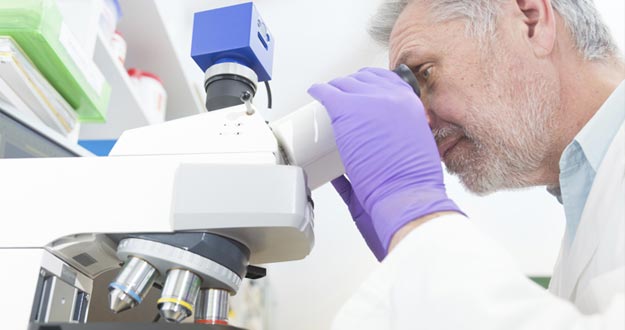
A researcher in a laboratory
As reported by the hospital, this treatment is encouraging, in acute lymphoblastic leukemia (ALL), the most common childhood leukemia, and that 93% of patients, without treatment options, have achieved a complete remission, is maintained for a period of 6 months and 3 years.
Medical specialists, worldwide, in Hematology, Immunology, Pediatric Hematology and Medical Oncology, have discussed the latest developments, obtained with this experimental technique, called in English Chimeric Antigen Recetor T-Cell (CART).
The symposium, organized by the Barcelona hospital, attended among others, the Dr. Carl June, a pioneer rese a type of adoptive immunotherapy, in which the patient becomes its own donor.archer, in this type of immunotherapy, and Director of Translational Research, at the Abramson Cancer Centre of the University of Pennsylvania (USA).
ALL is the most common type of cancer, in children, and it is characterized by an excessive production of lymphocytes, or immature white blood cells, that are quickly multiplied and they crowd normal cells out of the bone marrow.
Although the most children achieved a complete remission with chemotherapy or bone marrow transplantation, between 10% and 15% die cause of treatment resistance, due to their toxicity or relapse.
When treatment options are exhausted, they are needed less toxic solutions and more targeted, where the immunotherapy can play a key role solutions.
In this sense, the CART therapy, developed by Carl June, at the University of Pennsylvania, is
As explained by specialists, werponse, against viruses and bacteria) ande removed from patients T lymphocytes (cells, that coordinate the immune, response against viruses and bacteria) modified to direct against tumor cells and destroy them.
With these T cell transfusions, rejection is avoided and high response rates are achieved, as highlighted by the Hospital Clínic.
Well. I really liked this news, because I think it is wonderful that researchers can fill with hope, to thousands of parents, around the world, who have children with leukemia.
In addition, this article has reminded me when, in the late 90s, I helped a friend of mine, in Madrid, bringing to Spain, a child, aged 7, who had leukemia and the doctors said that he could die, at any time, if not operated soon. Well ... fortunately, we were able to bring him, to Barcelona, where they took care of the child, at the Institute of Health. They said they would try to make a bone marrow transplant --although it was difficult, because this child did not have his parents, either brothers or sisters; he only lived with an aunt of him and we did not know if his aunt´s bone was compatible with the child--; but, at the end, they had not operate on him and it was enough with a treatment. After 6 months, this child came to Madrid, back to his country, and cured. I got to meet him and I felt very happy and proud myself.
Until my next post, kind regards,
Luis.
Sponsored by Costaluz Lawyers.
Please click below:

 0
Like
Published at 10:49 AM Comments (0)
0
Like
Published at 10:49 AM Comments (0)
Developed in Spain a system of early detection of Alzheimer with speech
Monday, March 23, 2015
I have found another interesting news, about Alzheimer, that says: “They develop a system for early detection of Alzheimer's by analyzing speech”.
A method for detecting early way Alzheimer, is automatic analysis of spontaneous speech, an intelligent technique noninvasive diagnostic, that Elekin group is developing, at the University of the Basque Country, specializing in biomedical engineering.
The method is based on record of patients, while they tell some own life experience, in a relaxed atmosphere, and to the extent of several parameters, according to the UPV.
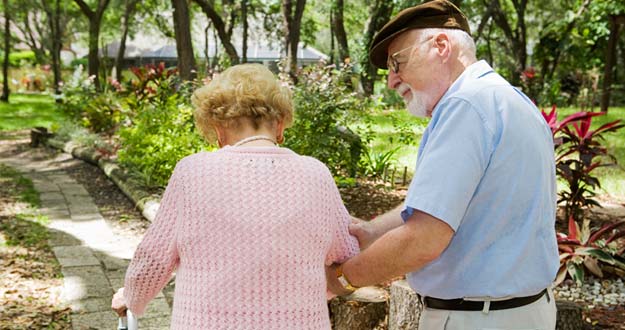
For example, they are measured breaks, that makes a patient, when trying to remember the word that it means. Therefore, the technique is performed, without altering or blocking abilities of the patient, because it does not perceive the test as stressful.
The system is not yet used, because it is a technique, in research and development. They are testing to people, who have not developed the disease, those with family history and ill, in collaboration with medical centres.
The aim of this study was to provide tools, to clinical professionals, to make diagnoses, in a much less invasive manner.
Currently, to make a clinical diagnosis of Alzheimer, medical tests, neuropsychological tests, neuroimaging, analysis of cerebrospinal fluid and blood tests are performed. All these tests, besides being invasive, have a great economic cost.
As explained, by the coordinator of the research group Elekin, Karmele López de Ipiña, the method developed is to "quantify elements or details, that health specialists see, with the naked eye; but, which, having accurate measurement, can help them diagnose pathologies or make a more accurate outpatient follow-up".
"You can even analyze the preclinical phase or people, who have not yet begun to develop the disease", has topped Ipiña.
In the study, are involved, between others, associations of families of Alzheimer's patients, the Universitat of Vic, the TecnoCampus Mataró (Universitat Pompeu Fabra), the Centre for Biomedical Technology (Madrid), the University of Las Palmas of Gran Canaria and the CITA-alzheimer, a centre of research and advanced therapies.
Also, the last week, has been known that a biotech, based in Granada (South eastern Spain), has registered a patent, for a method of diagnosing Alzheimer's, through a blood test.
The system, developed by the company Neuron Bio, in collaboration with Spanish hospitals, is based on the identification of a number of biomarkers and can reliably diagnose patients, with Alzheimer, and also anticipate the progress of the disease, before they show signs clinical dementia, according to Sync.
The method uses a blood sample, instead of the current analysis, in cerebrospinal fluid, which involves subjecting the patient to a lumbar puncture and analysis processes and longer evaluation.
Well, I think this advance is so great, because it let patient to suffer less. And, then, patient has more quality of life.
Until my next post, kind regards,
Luis.
Sponsored by Costaluz Lawyers.
Please click below:

 0
Like
Published at 11:46 AM Comments (0)
0
Like
Published at 11:46 AM Comments (0)
A wedding dance with a horse in Spain
Saturday, March 21, 2015
Today, I have found an curious video, that I would like to share with you. It is a dance of Sevillanas, among a bride and a horse. And I think that it happened in the province of Cadiz, in Andalussia. It seems to me a very nice effect, very Spanish. I hope that you also like it.
If you want to watch this video, please click on the link below:
https://www.youtube.com/watch?v=6dEZdCYuQ9k
Well, I hope that you have enjoyed the video.
Until my next post, kind regards,
Luis.
Sponsored by Costaluz Lawyers.
Please click below:

 0
Like
Published at 10:39 PM Comments (0)
0
Like
Published at 10:39 PM Comments (0)
Discovered a new method to improve attention and memory of children in Spain
Friday, March 20, 2015
A few days ago, I found a very interesting news: "A new online method allows children to improve attention and memory", and I would like to share it with you.
SmartickGames is the name of a new method, developed by researchers, at the University of Granada (South eastern Spain), and the company “Smartick”, to allow children to improve skills, such as attention, memory, perception and reasoning, just like their academic performance, through activities online.
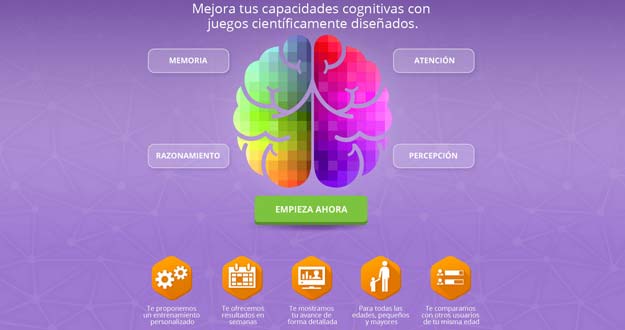
The front page of SmartickGames
The researcher with the Department of Experimental Psychology, at the University of Granada, Maria Rosario Rueda, has explained that they designed the application, with a knowledge, that allows for tasks, that they know "train basic processes of attention, memory, reasoning, etc".
"The training of these basic processes produces improvements, in cognitive faculties, that are measurable, such to cognitive level as at the level of brain functioning", she stated.
Thus, on the website of SmartickGames project, you can find brain training exercises, to improve cognitive skills as attention and memory, necessary for learning math optically.
The application analyzes the performance data of children, it can identify gaps, in specific skills, and provide exercises to help improve them.
Just like that, the program allows to measure the improvement, in the mathematical competence, in terms of cognitive training performed; ie, you see what kind of problems are best done, after you have completed your session, with certain exercises.
For its part, the partner-founder of Smartick, Daniel González de Vega, has explained that the program algorithms select the type of activity and the level of difficulty, that best fits each child.
"It lets prescribe customized itineraries of cognitive training, based on the performance of mathematical exercises and, depending on the behavior and learning outcomes in training games, suggesting changes, in the curriculum of math exercises", he clarified.
The project, which will also be available for the thousands of children, learning mathematics with Smartick, has the support of the Centre for Research Mind, Brain (CIMCYC) of the UGR –leaders, in the areas of cognitive neuroscience, memory and language-- and it has been selected, by the European Commission, as one of the most innovative and disruptive European projects of the Horizon 2020 program.
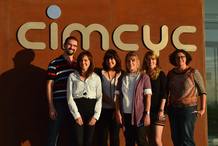
The team of the Centre of Research Mind Brain at the UGR
SmartickGames activities have been designed, by a team of experts in child psychology and neuropsychology, scientifically advised, by researchers at the University of Granada.
The teacher at the UGR, Maria Rosario Rueda, has worked, for four years, at leading research groups, in the USA. And she continues to collaborate, on joint projects, with American Universities.
Rueda, along with Teresa Bajo –-assigned to the Experimentally Psychology department-- are experts, in the study of higher cognitive abilities in humans, just like the development of these skills and the development of programs to promote such skills throughout life.
Well, I think it is very positive all we can provide to help children, especially to learn Mathematics, which normally they do not like it.
Until my next post, kind regards,
Luis.
Sponsored by Costaluz Lawyers.
Please click below:

 0
Like
Published at 12:11 PM Comments (0)
0
Like
Published at 12:11 PM Comments (0)
Discovered a new method to detect Alzheimer in Spain
Thursday, March 19, 2015
I have seen a video, that talks about Alzheimer, and I would like to share it with you, because this is a disease, that affects millions of people worldwide.
The new method has been studied in the University of Granada (South eastern Spain).
If you want to watch the video, please click on the link below:
http://www.antena3.com/noticias/sociedad/laboratorio-granada-descubre-nuevo-metodo-detectar-alzheimer_2015031700196.html
Voice in off: “ In a future, not too far, a simple blood test could detect Alzheimer reach; a faster and less painful method, than those used until now”.
A researcher at the laboratory: “By using the blood, as a fluid, for analysis, there is not practically invasion to patient”
Voice in off: “It Is the result of three years of research, in this laboratory of Granada. The new technique would allow to anticipate the disease, when the symptoms appear, because 80 percent of cases are detected too late”.
A Doctor: “Those persons, who have this different analytical profile, probably would be more likely to be treated with drugs; not, those who had not this analytical profile”
Voice in off: “Only in Spain, Alzheimer's strikes over a million people. To the medical advances, you add alternative therapies, like this ....... A Psychologist, from Granada, puts music to their patients ........ The result improves the ability to communicate ...; arouses emotions, which seemed buried in memory”
Note: While the voice in off was speaking, you can read two phrases said by a lord –who had headphones--: “And is this what you have bought? Is the appliance it?”
The Psychologist: “Of course!”
The lord: “This entertains you very much”
Well, I think this is an emotional project, because these researchers are treating seniors. I hope that they follow researching, in order to finish with Alzheimer´s off.
Until my next post, kind regards,
Luis.
Sponsored by Costaluz Lawyers.
Please click below:

 0
Like
Published at 11:47 AM Comments (0)
0
Like
Published at 11:47 AM Comments (0)
A study in Spain talks about the marketing of pharmaceutical
Wednesday, March 18, 2015
Yesterday, I found a news, very important, speaking of Alzheimer; the news was saying that: "The marketing of pharmaceutical prescriptions has influences in future doctors".
A study, conducted with students, from the Faculty of Medicine of the University of Zaragoza (Northeast Spain), has indicated that students and professionals, whose relationship with industry is narrower, "tend to positively evaluate their products and prescribe more, without any scientific evidence justified".
It is one of the main findings of an investigation, into how it affects student exposure to pharmaceutical marketing, says Sara Calderon, a researcher, at the Aragonese University and one of the authors of the article, published in the journal “Primary Care”.
The analysis assumes that the promotional activities of the pharmaceutical industry, in medical schools, are common through training. Some researchers have previously described this relationship, between students and industry, can identify patterns of medical prescription, as recorded Sync.
The research was conducted, with a total of 396 surveys, to students of the Faculty of Medicine of the University of Zaragoza.
According to the study, 78.6% of participants had received a gift, unrelated to the formation –samples of drugs, books, travel or meals--, especially those attending to the last courses, during the clinical stage and "students recognize that this may cause biases, in their professional activity", according to the authors note.

Pills on a doctor´s hands
Training is the most frequent activity of the pharmaceutical industry in medical schools, and also the most accepted. According to the work of Calderon, three out of four students think that the talks are often biased, in favor of the company's products, although more than 60% consider them useful.
The 22% would agree to prohibit meetings, between pharmaceutical representatives and students. "In this area are frequent undefined and even contradictory attitudes", Calderon says.
As an example of this ambiguity, the 39.8% of students considered dangerous pharmaceutical promotion, for their teammates; but only the 30.4% believe that it may affect themselves.
This article draws students, who have ever attended a talk, funded by a laboratory or have received a sample, better value their utility.
"The gift tends to create a sense of reciprocity, independent of its amount; but, professionals tend to see themselves, as immune to such effects", say the researchers.
However, attitudes, to invitations and gifts, vary according to their nature and content. While respondents are critical of vacation pay, expensive gifts or meals, they easily accept books, inscriptions and travel to meetings.
This influence appears to cross the border of training. "These behaviors seem to interbreed resident physicians, which can be attributed, in part, to training deficiencies, such on undergraduate as along MIR training", Calderon says.
The 24.9% of respondents have relatives, who practice medicine. These students, according to the research, receive more gifts and show a more positive perception of talks, funded by industry. Fewer people recognise the potential influence of developments, in their prescribing and their teammates, in future.
By other side, within sexes, the study shows a lower compliance. by women, to the strategies of the industry, the 14% versus the 23.4% of men.
To avoid possible negative influences, for Calderon, it would require strengthening of subjects "that encourage reflection and medicine based in evidence, the rational use of medicines or critical reading of literature".
There are also students who, in turn, create initiatives to fight what they see as a violation of medical ethics. As an example, the researchers named the Farmacríticxs group, consisting of sixth graders, who aims to promote an ethical and transparent relationship, with the pharmaceutical industry.
"Precisely because of their student status, activities and training content should be always accessible and rigorous", concludes the researcher.
Well, I did not know anything about this study; but, now, I think it is very interesting and I thik that it is very important that people know how the pharmaceutical industry works.
Until my next post, kind regards,
Luis.
Sponsored by Costaluz Lawyers.
Please click below:

 0
Like
Published at 3:01 PM Comments (0)
0
Like
Published at 3:01 PM Comments (0)
Some anecdotes occurred to foreigner people about Spain
Tuesday, March 17, 2015
A few days ago, I found an interesting video, which spoke of anecdotes, occurred to foreigner people, about Spain.
If you want to watch this video, please click below:
http://www.rtve.es/alacarta/videos/telediario/publican-libro-anecdotas-locales-gastronomicos-madrid/3034368/
Voice in off: “She was held for six years. Ingrid Betancourt was, in the Colombian jungle, while one of her companions spoke her about the Piglet of restaurant, in Madrid. They decided that, if they survived, they would celebrate it there”.
José González (Restaurant “Botín”): “They were both there, to celebrate it and I remember that they were even crying. What makes Piglet do shed tears, as in this case, is the raw material and the type of roast that we do”
Voice in off: “This emblematic Restaurant in La Castellana, during the World War II, played an very important role; on the first floor, a tearoom, frequented by Germans; in the second one, a clandestine Travel Agency, which managed passports to Jews, who went to Portugal”
Adriana Rivera (Restaurant “Embassy”): “It was the least obvious place, where this could occur”.
….Mick Jagger singing…..
Voice in off: “Nor is it obvious, where to go to dinner stars, like these, when they come on tour to Madrid; but everything just knowing…”
Eva Caballero (Restaurant “Paradis”): “We noticed that, at the next table, there were some journalists and, when Mick Jagger finished dinner and went out the door, was all full of fans, journalists ....”
Nadia Kolotúshkina (Voice in off): “Now we know that he was fed well, which allowed him to continue touring, equally enthusiastic ...”
Well, I did not know these anecdotes and I think they are so curious. I hope that you have liked them, such as I did.
And I also hope that you come to Madrid, in order to visit the “Embassy” restaurant.
Until my next post, kind regards,
Luis.
Sponsored by Costaluz Lawyers.
Please click below:

 0
Like
Published at 11:33 AM Comments (0)
0
Like
Published at 11:33 AM Comments (0)
Some Spanish researchers design some lenses to reduce the blindness
Monday, March 16, 2015
I found a very important news, because it deals with a serious problem, that happens to many people worldwide. The news says: "They design lenses that reduce up to 40% blindness from macular degeneration".
A research team, from the University of Murcia, has created some intraocular lenses, capable of decreasing progressive and irreversible loss of vision, due to macular degeneration, associated with age (DME).
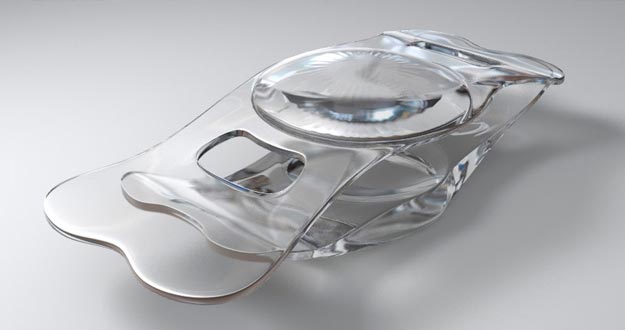
The lenses made of space technology in the Laboratory of Optics of the University of Murcia
To get its result, whose study has been published, in the journal Biomedical Optical Express, the Optical Laboratory of the University of Murcia (LOUM), led by the Professor, Pablo Artal, has used typical technology of space telescopes.
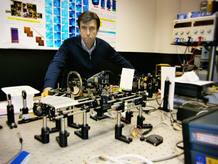
The Professor, Pablo Artal
Lenses, named iolAMD, are made of a flexible material is injected, into the eye, through a very small incision, that requires no sutures. This greatly reduces the risk of infection and postoperative complications, as Artal has explained in a note.
Thus, the patient's vision is moved, towards the peripheral area of the eye, to prevent the central area damaged. Thus, the patient controls his vision, without turning his head sharply, whenever he focuses on an object and also the advanced optical design solves serious problems, adapting to the peculiarities, possessed by each eye.
The Professor Artal, who has worked in collaboration with Dr. Qureshi, director and founder of the famous London Eye Hospital (UK), has revealed that they were inspired, by the first telescope built by Galileo Galilei, in 1609, to show that the Earth revolved around the Sun.
"It is a refracting telescope, with one positive lens and another negative one. From there, we solved the problems, that had other optical methods failed, to treat DME, that also reproduce the Galileo's telescope", clarified and has topped that another possible innovations of these minitelescopes is the application of modified opticals.
At present, they are conducted clinical trials, in over 200 patients of UK, Germany and Italy.
Recipients, of these innovative minitelescopes, have experienced an improvement, in vision, between 20% and 40%, according to preliminary data, that the London Eye Hospital manages.
The Professor of Optics, at the UMU, remarks that "it is not a cure, but returning the percentage of sight, to a person with DME, can mean give it the chance to drive or read". However, the final results, of these trials, will be validated, shortly, with its publication, in reputable scientific journals.
The Macular degeneration, associated to age, is the leading cause of blindness, in people over 55 years, in western countries, with more than 25 million patients worldwide.
The patient loses the central vision, when damaging blood vessels, that supply the macula, an area of the retina, that is responsible for our view is sharper and can appreciate the details.
DME patients, with acute phase, were aimed to blindness, in the absence of pharmacological or surgical effective and safe treatment.
Let´s hope that these researchers can design some lenses, to correct this blindness, to 100%.
Until my next post, kind regards,
Luis.
Sponsored by Costaluz Lawyers.
Please click below:

 0
Like
Published at 11:27 AM Comments (0)
0
Like
Published at 11:27 AM Comments (0)
Some Spanish researchers have found the fossil of a new species of freshwater turtle
Friday, March 13, 2015
Today, I want to follow talking about Teruel, because it has been there, where some researchers have found a new species of freshwater turtle.
Toremys Cassiopeia is the scientific name of a new species of freshwater turtle, who have been discovered, through fossils, by paleontologists from Teruel and from the Group of Evolutionary Biology, in the Faculty of Sciences of the UNED. It would be the latest pleurosténida turtle world record.

The fossil of the new species of turtle

The fossil of the turtle in the site of Santa Maria de Ariño
The study, published in the journal Cretaceous Research, by its authors, it has been possible after paleontological recovery and preparation of three turtle fossil specimens, from the site Mina Santa María de Ariño (Teruel), which is exploited by the mining company SAMCA and wherein have also discovered some new dinosaurs, has informed the “Dinopolis Foundation”.
The site, discovered, in 2010, by paleontologists from the Joint Paleontology Foundation Teruel-Dinópolis, who stressed the importance of the new turtle, because it allows complete ecosystem of this area of the Iberian Peninsula, during the Lower Cretáico part (between 113 and 100.5 million years ago).
Toremys should be the most modern pleurosténida Turtle on global record, as derived from Albian sediments are nearly 30 million more modern, than those containing any pleurosténida turtle known until the moment.
The new study provides novel information, to decipher the distribution and evolution of freshwater turtles, in Europe, well the record pleurosténidas Cretaceous turtle is confined to this continent.
The scientific name, of the new turtle, honors such the bull, that is part of the shield of the province of Teruel, as Cassiopeia (Turtle in the novel “Momo”, by Michael Ende), referring to the age, at which it is outside the time range, expected for any representative of its group.
Toremys fossils come from the same site, in which you have discovered new dinosaurs (called Proa and Europelta) and this finding is the eighth new animal, found in Ariño, one of the most important towns, in the mining area of Teruel.
In addition to dinosaurs, at the site of Teruel, were located teeth of theropod dinosaurs (carnivores), two new crocodiles (Hulkepholis plotos and Anteophthalmosuchus escuchae) and three new ostracods (Theriosynoecum arinnoensis, escuchaensis Theriosynoecum and Rosacythere denticulata)
Well, I think it is very interesting for Science and for the history of Humanity. I hope that you think the same and also that you can come to Teruel, if you never have been there.
Until my next post, kind regards,
Luis.
Sponsored by Costaluz Lawyers.
Please click below:

 0
Like
Published at 11:36 AM Comments (0)
0
Like
Published at 11:36 AM Comments (0)
The tree selected in Spain to compete for the "Tree of the Year" in Europe
Thursday, March 12, 2015
Today, I have found a curious news: “Spain participates in an European Competition for “The tree of the year”, and I should like to share it with you. If you want to watch the video, which shows what and where the tree, selected in Spain, is, please do click on the link below:
http://www.rtve.es/alacarta/videos/agrosfera/primer-plano-arbol-del-ano/3021550/
At the beginning, you can read: headboard poplar. Aguilar del Alfambra. Teruel.
Voice in off: “Hold on to, in a corner of Teruel, where winters last nine months, wrinkles of this headboard poplar reveal an elderly, 250 years old”
Xabier de Jaime (Studies Centre of the Jiloca): “That a tree gets older ... it is complicated ..... Whether a tree gets older, in these moors, of Teruel, --where precipitations barely exceed 500 liters ... --, it is still heroic .. .”
Note: The Studies Centre of the Jiloca = Nonprofit association dedicated to the investigaciion, promotion and dissemination of culture, in its broadest sense, typical of the Valley of the Jiloca (Teruel. Northeast Spain).
Voice in off: “Chosen to represent Spain in a Contest, who does not seek beauty, find the most beloved tree --and it is, in Aguilar de la Alfambra, hold its houses, firewood with which heat them up—“.
Xabier de Jaime: “Under these beams, born most neighbors; ie, these are the trees, with which have been built houses, under those born neighbors”
A neighbor lady: “In this village, we like trees and we have lived in the warmth of their firewood, because, in that river, you have already seen that there are many”.
Voice in off: “25,000, which makes this site of Teruel, in the highest concentration of these trees, in Europe; Very few, in the old continent. It is not the highest –even though it rises 24 meters-- and winter undresses it; it is not its best side. They measure its waist”.
A young woman from The Studies Centre of the Jiloca: “4,60 meters”
Voice in off: “Europe has come to look at it..... McBride, from the organization, knows it very well…….He (McBride, a member of the Group Organizing of the Competition) says that it is an example of the ancient culture of this land, the culture of our grandparents, our parents; not grow judgment, in a moment of history; it is the history of this land”
Silvia Barraca (Editorial office Aragon): “By the moment, it is the third, in this kind Eurovision of trees, from behind: symbols, like the great English Oak, where, they say that the selfsame Robin Hood hid, in this place. And another oak: that of Poland, which embodies the Polish identity, against the Nazi occupation”
Voice in off: “It sees spend time with barely trees, where only resists the headboard poplar. Now it is in a contest and vote for it is wanting it”.
…………music………………..
Voice in off: “It is a vote to survival, in a place where many left, which still need the few, who remained at its side”.
……….music…………………..
Well, as I said, at the beginning, I think it is a very curious news. And I am glad, knowing that Spain is represented with a tree, in Europe. I hope that you have liked it too.
Until my next post, kind regards,
Luis.
Sponsored by Costaluz Lawyers.
Please click below:

 0
Like
Published at 11:36 AM Comments (0)
0
Like
Published at 11:36 AM Comments (0)
The National Library of Spain launches an online catalog
Wednesday, March 11, 2015
I have just seen an interesting news about our Spanish Culture: “The National Library debuts a more intuitive online catalog”.
I am glad, knowing that the people responsible of this new catalog is able to move the Spanish Culture closer to people interested on it.
The National Library of Spain (BNE) already has a new online portal, for access to its data catalog, which aims to explore the bibliographic information, with a different approach to traditional, based on techniques of linked data.
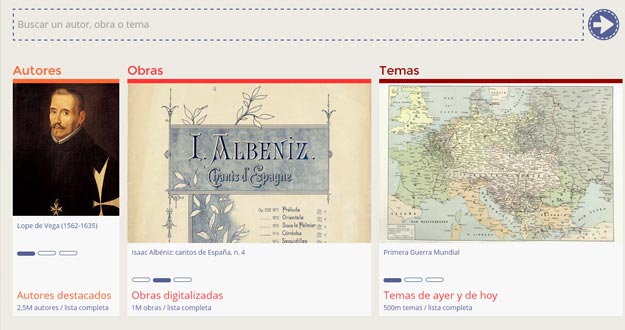
Screen shot of the new data portal of the National Library of Spain
That is, the application provides a search and retrieval broader intuitive and understandable than that obtained with the current systems, as recorded Sync (a journal about Science).
The portal, developed by members of the Ontological Engineering Group of the Polytechnic University of Madrid (PUM), integrated access to resources, that were previously independent (authorities, digital library and index), in a single application and enrich them, with data from other libraries.
The portal datos.bne.es has, as objective public, suchthe user of the library as the computer specialist. The second one will find a database, described in semantic language, that can be reused in other applications.
To do this, the bibliographic data of authors, works and themes have been transformed, from the traditional architecture of libraries, in certain formats (MARC21), to models and structures of the semantic web using the called Marimba tool.
Portal users find an interface, that exploits the data relationships and experiment, with new ways of presentation. Moreover, they can access to those copies, that are digitized, from the Hispanic Digital Library. Improvements also include the expansion of data offered, as much bibliographic as authority records.
With this technology, data can be displayed, on the website, of a reusable way --so that, other users can give them new uses-- and in a format that allows to operate with other applications. So, it exploits the relationships, between BNE own data and external data from other institutions.
The development allows the BNE join the challenge, to publish its bibliographic and about authorities catalogs, in RDF (Resource Description Framework) format, according to the principles of linked data, both basic components, in the semantic web.
Thus, it is adhered to the initiatives of other large national libraries, in France, UK, Germany and USA. Furthermore, intellectual property license, applied to data, is Creative Commons, to promote reuse and move closer to citizens.
From late November 2014 to late February 2015, it has been doubled the number of daily visits, to a total of over 40,000 unique visitors and over 155,000 visited pages.
The Ontology Engineering Group, led by the Professor Asunción Gómez Pérez (who has just received the “Ada Byron Woman Technologist Award 2015”, awarded by the University of Deusto), is located in the High Technical School of Computer Engineering, at the PUM.
Its researchers have developed applications, in a wide range of domains, such as knowledge management, life cycle management software applications, technological surveillance, text annotation and medical records, sentiment analysis, ecommerce, job searches and funding, geolocation and management of R + D projects.
In the field of linked data, emphasise, besides the application for the BNE, developed by doctoral student, Daniel Vila, the work done, in collaboration with the National Geographic Institute (GeoLinkedData), the Meteorological Agency (AEMET), the Grupo Prisa Digital (the Traveller), the Regional Transport Consortium Madrid and Fundeu (Terminesp).
In addition, this group maintains the Spanish chapter of DBpedia (project for the extraction of data from Wikipedia, with the aim of creating a semantic web version) and it participates in various activities of W3C standards (international consortium, that produces recommendations for the World Wide Web ).
Well, as I said, at the beginning, I think this project is a great discovery, in order to release our Spanish cultural heritage. I hope that many people can enjoy it.
Until my next post, kind regards,
Luis.
Sponsored by Costaluz Lawyers.
Please click below:

 0
Like
Published at 4:00 PM Comments (0)
0
Like
Published at 4:00 PM Comments (0)
Some Spanish researchers have discovered a bright cells responsible for tumor development.
Tuesday, March 10, 2015
Researchers at the National Cancer Research Centre (CNIO) have been discovered and characterized a novel specific marker of cancer stem cells: riboflavin or vitamin B2, a pigment that emits green fluorescence, as a result of their accumulation in intracellular vesicles.
This bright property is used for tracing, isolation and subsequent purification, without the need to use antibodies or other more complex techniques and higher cost.
The results of the research, led by the scientists: Irene Miranda, Bruno Sainz and Christopher Heeschen, published at the end of the last September-2014, in the journal Nature Methods.
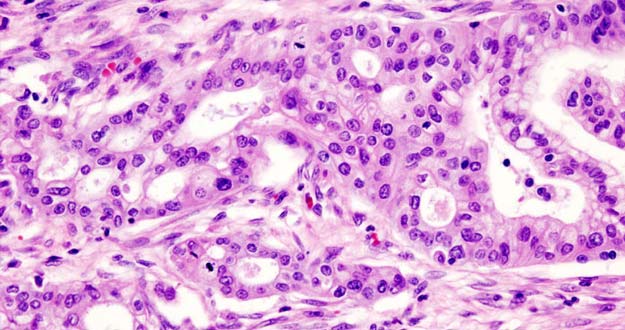
Image of a pancreatic adenocarcinoma
"The discovery of this new marker is a breakthrough, because it identifies cancer stem cells are more invasive and chemoresistant. The autofluorescence, of these cells, allow tracking them in an easy, simple and cheap way, and to study the origin of the tumor chemoresistance", says Irene Miranda, first author of the article.
"Normally, we only see the tree leaves, representing tumors and we can not make out the roots, which are the true responsible for its progression and growth", illustrates Miranda.
Tumors are mosaics of morphologically and molecularly very different cells. In this cellular heterogeneity, it is estimated that 1-2% of the entire tumor mass is made up of tumor stem cells, identified, in recent years, as the responsible for the origin of cancer and resistance to conventional chemotherapies.
This very small percentage hinders their isolation and analysis, just like the study of the origin of drug resistance.
However, researchers have discovered that tumor stem cells accumulate vitamin B2, due to increased the ABCG2 protein, responsible for the transport of vitamin, into intracellular vesicles, that confer brightness to cells. The reason for this phenomenon is yet to be determined.
The discovery was made in several tumor types, including samples from patients of pancreatic cancer, liver, colon and lung.
Despite the unknowns about its nature, autofluorescence could pursue personalized medicine of the future and the development of more effective cancer treatments.
"From now on, we can isolate the autofluorescent cells, from a biopsy, and test their sensitivity, in a panel of experimental drugs or already on the market", say Sainz and Heeschen.
"So, we want to accelerate the identification of new drugs or combinations thereof, that are able to kill cancer stem cells, for that particular patient", says Sainz.
The study was funded by the European Union, the Carlos III Institute of Health, the Ministry of Economy and Finance of the Government of Spain and the Foundation 'La Caixa'.
Well, I am glad seeing that researchers are working hard to find a definitive solution to all types of cancer. I hope to see it someday.
Until my next post, kind regards,
Luis.
Sponsored by Costaluz Lawyers.
Please click below:

 0
Like
Published at 11:36 AM Comments (0)
0
Like
Published at 11:36 AM Comments (0)
Advices against osteoarthritis by the spanish Dr. Ana Bellon
Monday, March 9, 2015
I have found a very interesting video, about Osteoarthritis, and I should like to share it with you. If you want to watch it, please click on the link below:
http://www.rtve.es/alacarta/videos/la-manana/alimentos-para-prevenir-artrosis/3021522/
Ana Bellón (A Doctor in “La mañana” of TVE): “My Faculty me they said that the best known of the disease is the patient himself -and not without reason ... Always listen to the patient, because it is the best understands what it feels and suffers--…….
Now, you can read: Dr. Ana Bellón. Specialist in Family Medicine. College of Physicians of Madrid.
Ana: “But if it is true that, to prevent osteoarthritis, we are saying, throughout all the program, it is important to make an exercise, soft and maintained, every day; it is important to have good control of our weight; it is important not wearing much heel; relax your legs; when you sit, put your legs up .... Well, they are small things, that, if we do them every day, we will protect our cartilage. And, from the point of view of food, I will say: more blue and less red; What does this mean ?, well, we will remove .... not remove; but we will reduce the consumption of red meat, and yet, we will increase the consumption of oily fish, such as tuna or salmon, which I have on the counter. It is very important, how we are going to cook it, because it is true that blue fish has more fats than white fish; they are healthy fats are unsaturated, rich in Omega3, which has an anti-inflammatory component; but if this tuna, shawl or cold, so, obviously, I shoot much the amount of calories; however, if take it and… look the four drops of oil, that I put on the sheet, --no more is needed--, and we put it on the sheet, the same with the salmon, then, what we are going to get is not increase the number of calories, from food and benefit, one hundred percent, of all the benefits, that they are providing to us. Another important thing is hydration: the food pyramid, against osteoarthritis, in the bottom, which is what you need to consume more, is always hydration, either as water or why not? as liquefied; blender is something, that I love, because, look, it transforms us a carrot on a smoothie rich, that will not only provide water to us, --because, after all, to liquefy is getting all food hydration ....-- I am going to stop now, because, if not, I have to raise much the voice….--;but also, all the nutrients and minerals, that give us vegetables .... So, at breakfast, for example, such a good .... little liquefied carrot; now, yes ... we are losing the fiber; but now, we what want is hydrate us….If we would like to increase fiber intake, we would have to take the chewed carrot; but it is an option..And, also, every day, we have to get a serving of vegetables or fruit; besides, we will choose the ones most inflammatory content; in this case, they are: celery, broccoli, turnip, it is also the carrot. Therefore, we can take breakfast, or at mid-morning taking a liquefied carrot; but, also to use carrot, when salad time or cooking with it. They are spinach and, of course, among the fruits: pineapple and papaya, because it has an anti-inflammatory component ... ,we know that they have enzymes, that facilitate a good digestion of proteins and, in addition, they have an anti-inflammatory component; therefore, also, analgesic. And I want to finish, because Jack have told me that, through Twitter, has come a question, which makes Rodolfo, and it has not left very clear to him... he says that I have spoken of 50 units of pistachio; but if I meant a day, a week or how much. Actually, in the study, they are: 50 pistachios --which are the ration, around 30 grams-- per day; yes: we would have to consider that we have to increase the amount of oil, otherwise would shoot the calories. So, Rodolfo, your question is answered”.
Well, as I said before, I think this video is very interesting, because I think that many people suffer this disease, all over the world.
So, I hope that researchers follow studying about it, in order to help many people.
Until my next post, kind regards,
Luis.
Sponsored by Costaluz Lawyers.
Please click below:

 0
Like
Published at 10:33 AM Comments (2)
0
Like
Published at 10:33 AM Comments (2)
An investigation led in Spain shows a cellular mechanism that can improve the efficiency of future vaccines against AIDS
Friday, March 6, 2015
A few days ago, I read an article about new research in Spain, who said the following: A cellular mechanism can improve the effectiveness of future vaccines against AIDS.
A new cellular mechanism found, by an international team of researchers, led by the Higher Council for Scientific Research (CSIC), can improve the effectiveness of future vaccines, against AIDS.
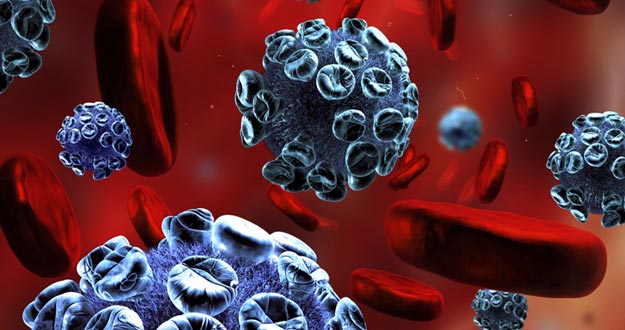
3D illustration of HIV virus
The results of the study, published in an article in the journal Proceedings of the National Academy of Sciences (PNAS), describe this new process induces a specific response, against HIV, by increasing the innate immune response.
The study, led by the Teacher Mariano Esteban, from the National Center for Biotechnology (CNB), has observed the responses, that induce poxviruses, a family of viruses whose most representative member was used to eradicate smallpox.
Thus, in this work, a new mechanism, by which the poxvirus induce some specific immune responses to HIV antigens, is described, which could help improve future vaccines against AIDS.
The researchers have identified the mechanism of action of three viral genes, that block the key factor, in the regulation of cellular genes.
When eliminating them, from the viral DNA, they get that, in the infected cells, increase levels of costimulatory molecules of the innate response (as they are cytokines, chemokines and others), that attract neutrophils (blood cells) toward the site of infection, as Esteban explains.
This recruitment of neutrophils, leads to an increase, in the production of specific lymphocytes, that play an important role, in infection control. "The results of these investigations have applicability in improving vaccines against HIV and other pathogens", says Stephen.
Well, I think it is very important that researches work hard to discover an effective vaccine against AIDS. At least, the Spanish researches are making a great affort to get.
Until my next post, kind regards,
Luis.
Sponsored by Costaluz Lawyers.
Please click below:

 0
Like
Published at 11:52 AM Comments (0)
0
Like
Published at 11:52 AM Comments (0)
The loss of a great Spanish philologist
Thursday, March 5, 2015
Yesterday, it was 11 years ago, that died Fernando Lázaro Carreter, a famous Spanish philologist.
Lázaro Carreter was born, in Zaragoza, in 1923 and he died in Madrid.
He was a philologist, teacher of Spanish and Director of the Royal Spanish Academy, in 1992-1998.
Fernando studied Baccalaureate, in the "Goya" Institute of Zaragoza and, there, he discovered his love for literature, from the hand of Jose Manuel Blecua (a teacher who, later, would be a Professor of Spanish Literature, at the University of Barcelona).
He studied at the Faculty of Philosophy and Letters of Zaragoza and, later, he studied "Romanic Philology", at the University of Madrid.
In 1947, he finished his PhD (Doctorate), at the University, under the Direction of Damaso Alonso.
He was also Professor of General Grammar and Literary Criticism, at the University of Salamanca, in 1949. He was Dean of his Faculty of Philosophy and Letters.
In 1971, he joined the Autonomous University of Madrid, as Full Professor of Spanish Language.
From 1978 to 1988, he is Full Professor, at the Complutense University of Madrid.
Lazaro Carreter was retired, as Professor of Literary Theory, in 1988.
He taught, as a visiting teacher, at universities in France, Germany and the United States. And, as an associate teacher, at the Sorbonne.
He joined his philological knowledge, with his interest in Journalism, the Advisory Board of Style, Department of Spanish Urgent, in EFE, of which he is a founding member. Participates in the drafting of the Manual of Urgent Spanish in 1976.
Since 1972, he takes up the “R” armchair of the Royal Spanish Academy, where he was its Director, from 1992 to 1998.
Then, he is worried, especially, to finance the institution, with the creation of the Foundation for the Royal Spanish Academy, in 1993.
I have found a video, with a small interview, to Fernando Lázaro Carreter, where you can see how much he was obsessed with the proper use of the Spanish. If you want to see the video, please click below:
http://www.rtve.es/alacarta/videos/personajes-en-el-archivo-de-rtve/muere-fernando-lazaro-carreter-2004/1322997/
(This video happened on March – 4 – 2004)
Ana Blanco (Anchor in TVE): ” Today, moreover, it is a mourning day, for Spanish Language”
Josep Puigbó (Anchor in TVE): “Yes, cause of the death, this dawn, in Madrid, of the linguist and Academic, from Aragon, Fernando Lázaro Carreter, by a multiple organ failure. He was 80 years old and was, during 7, the Royal Academy of Language. He stressed, in many areas of Letters, from books to articles; but, the obsession, that scored all his life, was the fight against the misuse of the Spanish. His articles, in press, which were dubbed as "darts", by him, was a constant complaint against evil speaking by journalists and politicians. In his last interview, assigned to Spanish Television, Lazaro Carreter launched a "dart" against the tendency to use "ticks", instead of using synonyms”.
Fernando Lázaro Carreter: “Now, for example, I do not know who came up with the stupidity that "homework", "homework done". It is well that infantile "tick" ....., who invented it..., but it was a funny metaphor; but, now, to see a lord Minister, who says: "I am going on vacation with the homework done" .... Look .... Go away to walk !, but not on vacation”.
Well, I think this video is interesting, because Lázaro Carreter, gives the Spanish language the importance, that it has –above all, now when we are 500 million speakers of Spanish, all over the world--.
Until my next post, kind regards,
Luis.
Sponsored by Costaluz Lawyers.
Please click below:

 0
Like
Published at 12:35 PM Comments (0)
0
Like
Published at 12:35 PM Comments (0)
Preventing flooding in the village of Quinto de Ebro, Northeastern Spain
Wednesday, March 4, 2015
Yesterday morning, I got excited, when I listened, on the radio, the Mayor of the village Quinto de Ebro (near Zaragoza, in northeastern Spain), Digna Bes, speaking of her neighbors, who have helped the public company, SARGA, to build a speck (ball ground, that closes or saves the passage of water in a ditch) to prevent water, from the river Ebro, which passed close to the village, overwhelmed, does not enter houses of the village.
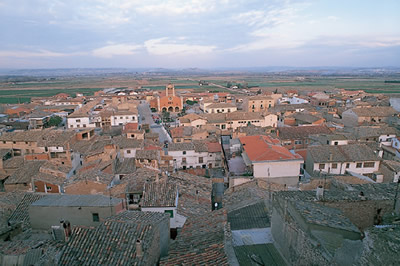
I noticed to the Mayor to be proud of her neighbors. I should feel the same…
Strengthening hillock of the village of Zaragoza, Quinto de Ebro, has contained the extraordinary rise of the river, whose peak has passed the last dawn (the dawn of the Tuesday).

The river Ebro, when passing close to Quinto
"All night have been working deployed troops and farmers themselves, with their tractors", said the Mayor of Quinto de Ebro, Digna Bes, indicating that the neighbors have made efforts to contain up to 7.00 a.m..
Bes said that water has entered the fields and "it has jumped over the roads and it had an incredible strength; but it has not arrived to the village, thanks to the cord, that they made yesterday and tonight".
The access to this village, located downstream of Zaragoza, neither present problems, the Mayor has explained. In the area, are members of the EMU (Emergency Military Unit), the Red Cross and Civil Protection.
Well, as I said earlier, I am pleased having some compatriots, as caring and responsibles. I would like that many other villages did the same, in any emergency situation.
Until my next post, kind regards,
Luis.
Sponsored by Costaluz Lawyers.
Please click below:

 0
Like
Published at 10:17 AM Comments (0)
0
Like
Published at 10:17 AM Comments (0)
Salmorejo from Córdoba, Southern Spain
Tuesday, March 3, 2015
The Salmorejo is a typical dish, in Andalusia, especially when the warm weather arrives.
In case that you do not know Córdoba (in the South of Spain), I can tell you that it is a wonderful town, full of history; but, also, with a great gastronomy.
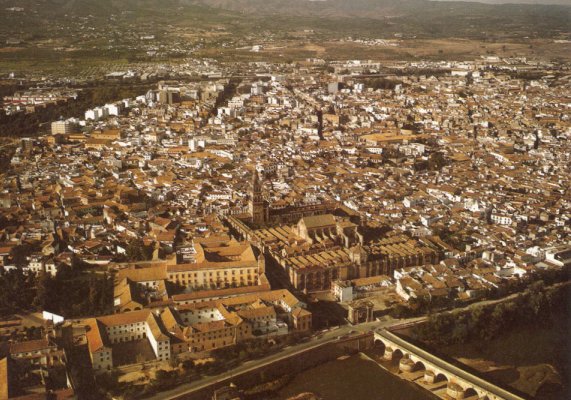
Córdoba, Southern Spain
Once, many years ago, I was in Córdoba, with my parents, and they invited me to dinner in a very good restaurant, named “The red horse”; what a nice it was….and how well we ate……!. I do not remember that my parents ate Salmorejo; but, surely, you could ask for it.
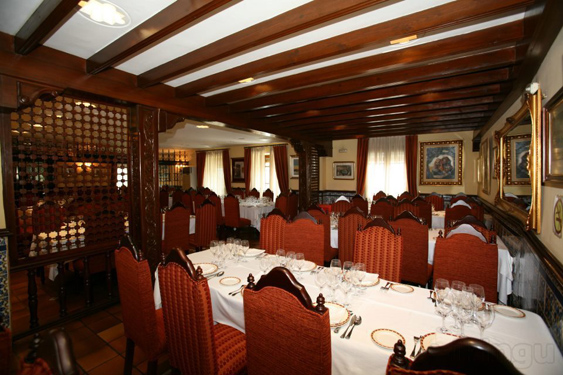
"The red horse", in Cordoba
These are the Ingredients, for 4 persons, that you have to use, in order to cook a good “Salmorejo”: 750 grams of branch tomatoes, ripe. 1 clove of garlic. 100 gr of breadcrumbs from the previous day. 200 grams of virgin olive oil. Sherry vinegar to taste. Fine salt. And, for garnish: 100 gr chopped ham or flakes. 2 boiled eggs chopped.
And, now, I am going to explain you how to cook the Salmorejo: First of all, you wash the tomatoes, you cut peduncle them, you chop and cast them, in a jar or in a bowl, to crush. You break crumb and cast it with tomatoes; repeat the operation, with garlic, and you begin to grind all, at maximum power. When properly crushed, you begin to pour, in thread, olive oil, crushed while, until you have thick cream texture. At this point, you put a pinch of salt and vinegar. Cool it, in the fridge, for a couple of hours.
To plate the Salmorejo: In four bowls, pour the Salmorejo, well cold, sprinkle the chopped egg, the chopped ham or flakes and pour a little stream of virgin olive oil.
And this must be the result:
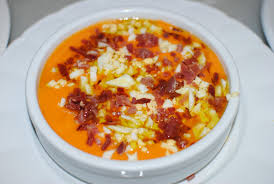
The Salmorejo
Well, I hope that you want to try to cook this good recipe. And after cooking, please tell me about it.
Until my next post, kind regards,
Luis.
Sponsored by Costaluz Lawyers.
Please click below:

 0
Like
Published at 10:44 AM Comments (0)
0
Like
Published at 10:44 AM Comments (0)
Spanish researchers have discovered a pill that prevents a second heart attack
Monday, March 2, 2015
I have just seen a very important news, for thousands of people, who have already suffered a heart attack. The article states: A new polypill prevents the risk of a second heart attack.
A polypill, adopted by the EU and the Spanish Agency of Medicines, reduces, by two thirds, the likelihood of having a second heart attack. It is called Trinomia, it includes three active ingredients and it has been developed, by researchers, at the National Center for Cardiovascular Research (CNIC).

Trinomia: a polypill that prevents a second heart attack
The drug is for patients, who have undergone a heart attack and require treatment to reduce the chances of a second cardiovascular event, situation that occurs in about 30% of patients, as has assured, at a press conference, the Managing Director of the CNIC, Valentin Fuster.
The polypill, developed by the IASB, in collaboration with the pharmaceutical company Ferrer, has three active ingredients: acetylsalicylic acid, to prevent thrombus formation; artovastatina, to control cholesterol levels and stabilize atherosclerotic plaque; rampiril, an antihypertensive, preventing heart remodeling, that occurs after a heart attack, reported Sync.
For now, Trinomia be marketed, in 15 European countries, and is set to hit another 90, within a period of four years, has indicated Jordi Ramentol, Managing Director of Ferrer, who pointed out that, in Spain, the price of monthly treatment, with this drug, will be around 10 euros.
"It is already implemented in Latin American countries, such as Argentina and Mexico. We anticipate that, in 2016, it will arrive to countries of Asia and will be marketed in Egypt, which has a high incidence of cardiovascular events, at the right price to its economy", added Fuster, who has also emphasized the social nature of this investment.
The main advantages of this drug are improving treatment adherence, ie, people it costs less to take three compounds, in a single capsule, than to take them separately.
To this one, it must be added the cost reduction, "the largest in the marketing of medicines is their distribution, so a single pill could make the pill arrived to places with fewer economic opportunities", said the Managing Director of the CNIC. Another benefit is its accessibility, in developing countries.
To demonstrate adherence to treatment, it was conducted a clinical trial, presented, at the European Society of Cardiology, with patients who had suffered a myocardial infarction, which showed a 22% adherence to the polypill than the components separately. The study was published in the Journal of the American College of Cardiology (JACC).
Another US study, conducted with customers of the largest insurers, in the country, showed that patients, with greater adherence to medication, reduced the risk of cardiovascular events, significantly.
In order to quantify the cost and effectiveness of the pill relationship, the European Commission will finance the SECURE study, which will evaluate the results, in patients from seven European countries, including Spain, starting in October.
The promoters of the drug have asked the World Health Organization (WHO) including Trinomia, in its list of essential drugs, to which the entity will respond next April.
Ramentol estimates the cost of the drug development, at 25 million euros. The Secretary of State for R & D, Carmen Vela, who chaired the presentation of the drug, stressed the need for public-private collaboration, in the Spanish science.
Well, as I said, at the beginning of this post, I think this discovery is so interesting, for Society, because it can help many people. I hope that its effectiveness continues for ever and, even though that pill can be improved.
Until my next post, kind regards,
Luis.
Sponsored by Costaluz Lawyers.
Please click below:

 0
Like
Published at 9:47 AM Comments (2)
0
Like
Published at 9:47 AM Comments (2)
Spam post or Abuse? Please let us know
|
|